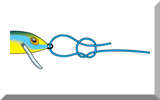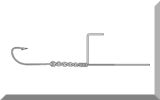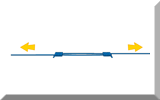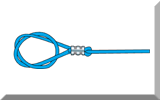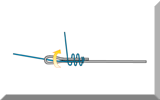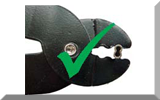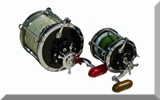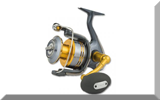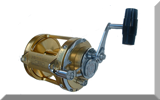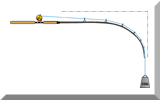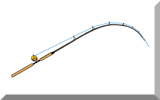A Fishing Line Comparison Chart for Sea Anglers
|
| Nylon Monofilament | Fluorocarbon | Braid Line | |
| Cost | Cheapest | Most Expensive | |
| Density | Least Dense (Floats) | Most Dense (Sinks) | |
| Diameter (lb for lb) | Thickest | Thinnest | |
| Elasticity | Most Elastic | Least Elastic | |
| Flexibility | Least Flexible | Most Flexible | |
| Memory | Most Memory | Least Memory | |
| Porosity | Most Porous | Least Porous | |
| Resistance to abrasion | Most Abrasion Resistant | Least Abrasion Resistant | |
| Resistance to uv degradation | Least Resistant to UV | Resistant to UV | Resistant to UV |
| Visibility | Least Visible | Most Visible | |
| Perceived Strengths | Its elasticity allows it to act as a shock absorber and will help to prevent a fish from tearing itself free of the hook.
It's the most inexpensive of all fishing line types. It's transparent, and less visible in the water than all lines other than fluorocarbons. Knots and crimped connections hold well in nylon line. Nylon is a low memory material, so it will soon forget about the coils it was restrained in on the spool. Moderately abrasion resistant |
It's virtually invisible under water.
It's a low stretch material, a property that provides excellent bite detection at the rod tip. It??s denser than water and sinks readily as a result, allowing trolling and spinning lures to run deeper. It doesn't absorb water like mono does, and keeps its strength longer as a result. It's slightly stiffer than mono, and less likely to tangle. Good abrasion resistance. Relatively high resistance to ultra-violet light |
It has near zero stretch, which is great for bite detection.
Its near zero stretch enables the angler to control lure action when jigging and spinning. It has an amazing strength/diameter ratio which means you can get an awful lot of it on the reel. Its small diameter enables it to fly through the air with ease, for prodigious distance casting. Its small diameter enables it to cut through the water better than mono, allowing deeper trolling and faster deep-drop jigging. Spectra line has no reel memory whatsoever. |
| Perceived Weaknesses | Its elasticity works against it when you're trying to make the longest possible cast, where it absorbs energy that is better transferred to the rod. Shock leaders for casting should always be made from low-stretch varieties specifically produced for this application, or fluorocarbon.
It's prone to ultra-violet degradation from direct sunlight. It's absorbent in saltwater to a small degree, which weakens it over time. |
It's expensive, more than double the price of standard mono.
It has a relatively high line memory, which means that casting distances can be affected. |
It's so thin and hard it can cut fingers to the bone. Be careful!
It can be similarly hard on rod guides. Use it only on rods with roller guides or rings intended for use with braid lines. Its near-zero stretch means that it has no shock absorbing properties what so ever. It's hard on the angler's arms and shoulders, and on the fish's mouth too. All braid line can be very visible in the water, particularly when seen from below and silhouetted against the sky. Only a few knots will work in braid lines - have a look at these braided fishing line knots to learn how to tie the ones that will. It doesn't cast well from baitcast reels. Its small diameter lets it squeeze between the underlying coils, resulting a short cast if you're lucky and a birdsnest and a crack-off if you're not! A fixed spool reel is a much better tool for casting super-braid lines, but because of its ultra-softness, wind blown tangles can arise and care must be taken to ensure that no loops are wound onto the spool. And yes, you've guessed it - it's expensive! |
| Primary Uses | As a good general purpose main reel line.
As a shock absorber leader when using non-stretch braid lines. For tying hook traces and terminal rigs. |
For tying hook traces and terminal rigs in clear water.
For low-visibility leaders when trolling and spinning. For non-stretch shock leaders when long casting is necessary, as when surfcasting. |
For long-casting applications, and up-tide ledgering. |
There's a lot of conflicting information around when you're trying to make a fishing line comparison between the modern lines. And of course within these three main line types there are various grades of quality.
But the purpose of this fishing line comparison table is to enable you to at least decide on what?line type?best suits your needs, before finally making a choice of manufacturer.
Of course none of these line materials will stand up long to the determined attention of a toothy fish - you'll need a wire leader to tackle those.
